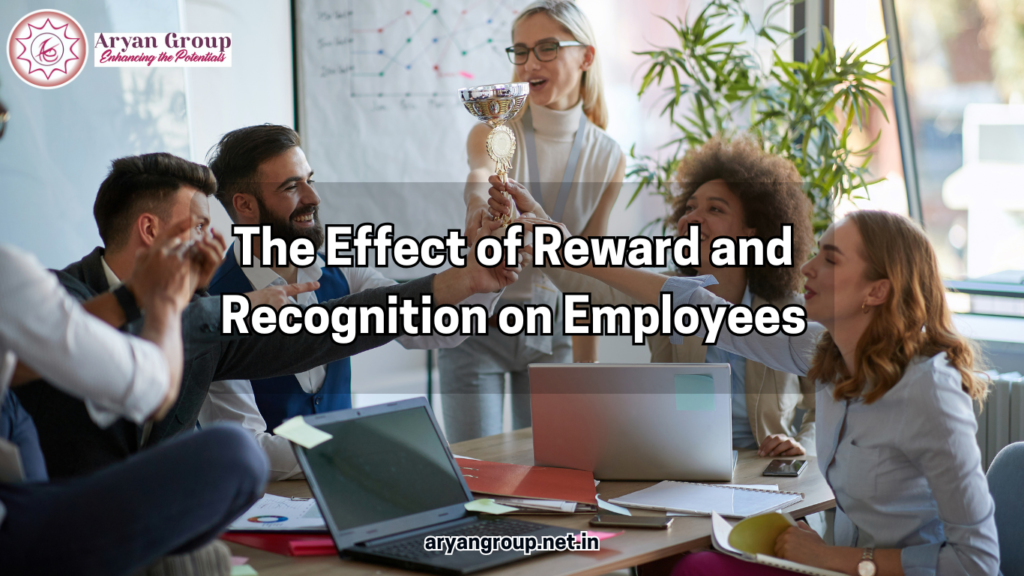Employee motivation and productivity are significantly influenced by the way organizations recognize and reward their efforts. This article delves into how these factors contribute to job satisfaction, organizational success, and overall employee well-being. We’ll explore key aspects of reward and recognition programs, their impact on both employees and companies, and best practices to ensure long-term positive effects.
Why Reward and Recognition Matter
It’s no secret that employees who feel valued are more likely to be engaged in their work. But beyond engagement, recognition fosters loyalty, reduces turnover, and improves performance. A strong system of rewards motivates employees to consistently deliver their best work.
The Psychological Impact
The relationship between reward, recognition, and human psychology plays a crucial role in how employees perceive their workplace. Employees are driven by the need for appreciation, which is deeply rooted in human nature.
- Positive Reinforcement: When employees are rewarded for good work, it reinforces that behavior and encourages them to continue performing well.
- Job Satisfaction: Recognition increases satisfaction by making employees feel appreciated, boosting their emotional connection to their work.
- Intrinsic vs. Extrinsic Motivation: While monetary rewards (extrinsic) are effective, intrinsic rewards like praise and acknowledgment can be even more powerful in fostering long-term engagement.
“People work for money but go the extra mile for recognition, praise, and rewards.” — Dale Carnegie
Types of Reward and Recognition
There are various forms of reward and recognition that companies can offer. It’s essential to tailor these approaches based on employee needs and the organizational culture.
| Type of Recognition | Examples |
|---|---|
| Monetary Rewards | Bonuses, pay raises, profit-sharing |
| Non-Monetary Recognition | Employee of the Month awards, public praise |
| Opportunities | Professional development, promotions |
| Tangible Rewards | Gift cards, gadgets, company perks |
Monetary vs. Non-Monetary Recognition
While monetary incentives are often used as quick motivators, non-monetary recognition—such as a simple “thank you” in front of the team—can have a profound, lasting impact. Studies show that employees who feel regularly recognized are more likely to stay with a company long-term.
The Balance Between Rewards
A balanced approach between monetary and non-monetary rewards ensures that employees feel valued in multiple ways. Tangible rewards are great for immediate impact, but non-tangible recognition builds a culture of appreciation, trust, and personal satisfaction.
The Business Impact of Rewarding Employees
The importance of employee recognition extends beyond individual satisfaction—its impact on the business is profound.
Increased Productivity
Recognition programs drive performance by making employees feel their contributions are seen. This, in turn, improves productivity. Employees work harder when they know their efforts are being noticed and appreciated.
Reduced Turnover
A well-structured reward and recognition system decreases employee turnover. High turnover rates can be costly and disruptive to businesses. Employees who feel valued are more likely to stay, reducing the costs associated with recruitment and training.
Enhanced Company Culture
A strong culture of appreciation leads to a more positive work environment. This can result in better teamwork, higher morale, and a more resilient workforce. Employees are more inclined to support one another when they feel supported themselves.
Best Practices for Implementing a Reward and Recognition Program
To truly benefit from reward and recognition systems, companies must design and implement programs that align with their employees’ values and the organization’s goals.
Tailor Recognition to the Individual
Not all employees appreciate the same types of rewards. Some may value monetary compensation, while others might prefer career advancement opportunities or public recognition. Taking the time to understand individual preferences ensures the reward feels personal and meaningful.
Regular and Timely Recognition
Consistency is key. Regularly acknowledging employees’ efforts—whether small or large—helps maintain motivation. Recognition should also be timely; waiting too long diminishes the impact.
- Immediate Feedback: Praise employees soon after an achievement.
- Ongoing Appreciation: Don’t wait for annual performance reviews to express gratitude.
Encourage Peer-to-Peer Recognition
A culture of appreciation is best sustained when employees also recognize each other’s contributions. Peer recognition fosters teamwork and helps build a strong sense of community within the workplace.
Common Challenges and How to Overcome Them
Despite the benefits of reward and recognition, many organizations struggle to implement these programs effectively. Here are some common obstacles and solutions:
| Challenge | Solution |
|---|---|
| Budget Constraints | Focus on low-cost or no-cost recognition (public praise, time off) |
| Inconsistent Recognition | Implement a structured program with regular check-ins |
| Lack of Employee Feedback | Create open channels for feedback to ensure rewards are meaningful |
| Fear of Favoritism | Develop clear criteria for rewards and ensure transparency |
Conclusion
Reward and recognition programs are more than just nice-to-have—they’re essential to employee well-being, company culture, and business success. When done right, they not only motivate employees but also foster a thriving work environment where people are committed to giving their best.
Key Takeaways
- Reward and recognition drive employee motivation, performance, and loyalty.
- A combination of monetary and non-monetary recognition is most effective.
- Regular, timely recognition is crucial for sustaining long-term motivation.
- A well-structured program improves company culture and reduces turnover.
FAQ
1. What are the most effective types of employee recognition?
Monetary rewards, public praise, career advancement opportunities, and peer recognition are some of the most effective types.
2. How often should employees be recognized?
Recognition should be ongoing. Don’t wait for yearly performance reviews; make it a regular practice.
3. Does recognition need to be expensive?
Not necessarily. Simple acts like public praise or a thank-you note can have a powerful impact.
4. What if an employee doesn’t respond to recognition?
It’s important to tailor recognition to individual preferences. Some employees may value private feedback over public recognition.
5. How do reward and recognition impact company culture?
A strong reward and recognition program fosters a culture of appreciation, teamwork, and loyalty.

